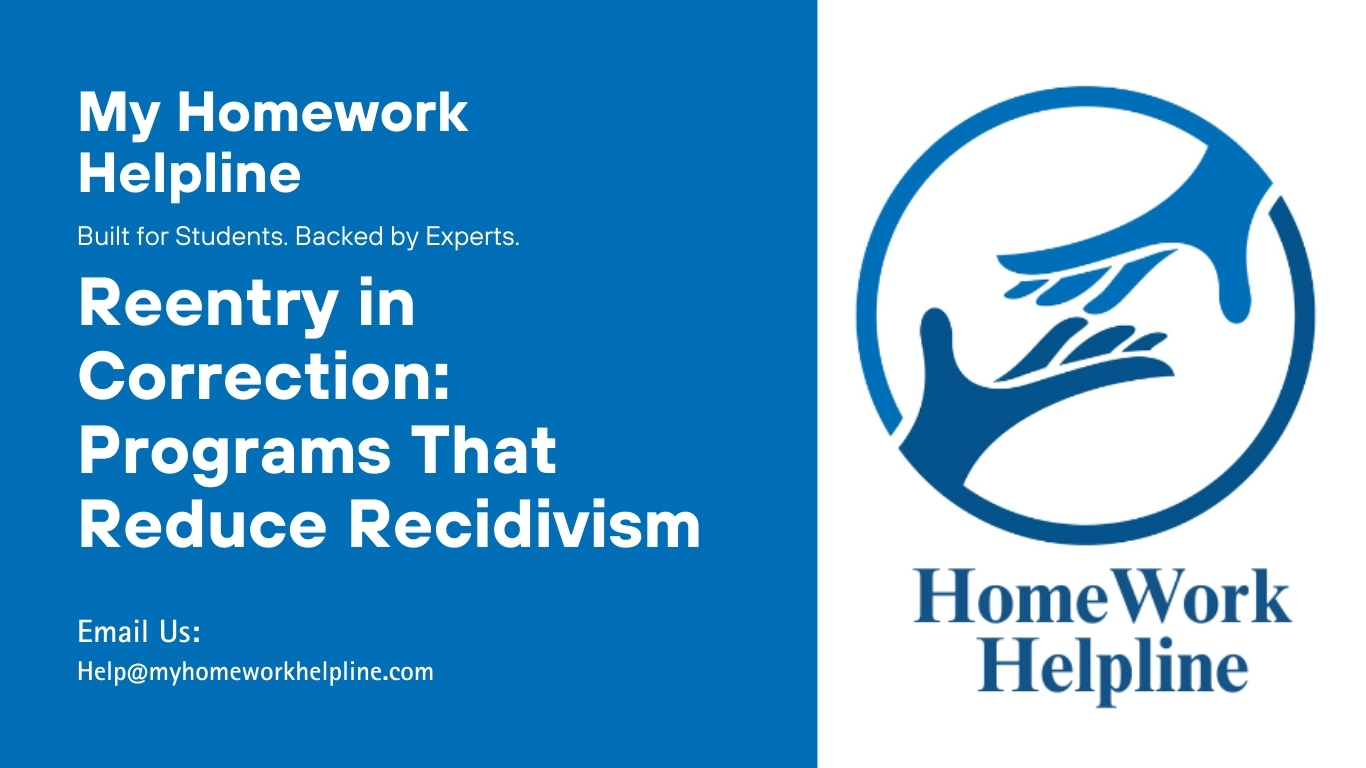Reentry in Corrections Essay: Reducing Recidivism Through Effective Programs
Recidivism refers to an individual relapse into criminal behavior, usually, after the person has received sanction or rehabilitation for a prior crime (Wong et al., 2019). According to Wong et al. (2019), about 650,000 people are released from prisons, while seven million are released from jails annually in the US. Two of the three tend to be rearrested within three years after they are released. Analysts note that the rate of recidivism can be associated with social interactions during incarceration, depression, lack of economic and employment opportunities, lack of social reintegration, underlying issues resulting in crime that were untreated during incarceration, and unchanging lifestyle and social circle upon release (Wong et al., 2019). Programs and institutions such as UNICOR, Safer Foundation, and Mount Tamalpais College have been developed to address these issues. The paper will examine these initiatives to understand their significance in the community and why Safer Foundation and Mount Tamalpais College should receive more government funding.
If you need professional help with law assignments or criminal justice homework, we provide expert assignment and homework assistance tailored to your academic needs. Whether you’re analyzing recidivism, writing essays, or completing research papers on correctional programs, our team offers top-quality support. Visit our Law Homework Helpline today and ensure your assignments are completed accurately, on time, and with the highest academic standards.
UNICOR is a corporation owned by the government. According to bop.gov (2023), the organization aims to protect society by reducing crime perpetrated by inmates through job training. The institution offers inmates marketable job skills that allow them to become law-abiding citizens and contribute positively to society. Research shows that inmates who participate in the training programs are less likely to recidivate than other inmates. Even after 12 years following release, inmates participating in the program are 24% less likely to revert to illegal activities. Additionally, these individuals are 14% more likely to receive gainful employment following release from prison (bop.gov, 2023). Research also shows that minority groups experience the most benefits, with individuals participating in the program being less likely to engage in prison misconduct while still serving sentences. However, the program does not entirely benefit the inmates, as they are only paid $1.15 per hour. Critics note that the organization sells most of its products to the government, making about $606 million in gross annual revenue but underpays its workers. Therefore, the program is not efficient as it is currently, as it capitalizes on forced labor and does not incorporate the community in the rehabilitation program.
Safe Foundation is a nonprofit social impact institution established in Illinois, Chicago. The organization was developed to reduce recidivism by offering support to inmates through a wide array of services and efforts to allow those released from prison to access gainful employment (guidestar.org, 2023). Research shows that the Safe Foundation programs have helped neighborhoods reduce their recidivism rate by half in a period of 18 months. This is carried out through effectively coordinating traditional support services, including mental health treatment, employment programs, family outreach programs, and retreats. Individuals participating in the program and being employed for more than 30 days have a recidivism rate of 22% three years after release; those receiving employment and support services have a 13% likelihood of recidivism. In the entire state, 52% of inmates released from prison are re-incarcerated within three years (guidestar.org, 2023). The program does not concentrate on the inmates but also on the community, making it effective; therefore, being well designed and effective.
Mount Tamalpais College offers inmates the academic skills necessary for gainful employment. The organization was developed to freely offer inmates intellectually challenging degrees and college programs (mttacollege.org, 2023). The goal was to allow the inmates to access quality education, fostering the values of civic engagement, equity, freedom of expression, and independence of thought. The organization has offered services to more than 3500 students and currently offers about 60 courses. Analyst note that the institution’s objectives are a success as its students have a recidivism rate of 17% when compared to the 65% recidivism rate in the corrections and rehabilitation department in California (mttacollege.org, 2023). The program has been shown to change how individuals perceive themselves, positively impacting other inmates. Over 90% of students have reported that the program positively impacted their mental health, self-identity, and personal relationships. Some analysts are skeptical about the success of the students, as the inmates’ academic qualifications may be overlooked due to their backgrounds. However, the students gain the necessary skills to participate in nation-building and also to change their mindset. Therefore, the program serves its goals by creating a secure community. The organization receives funding from private philanthropists and hence only serves a portion of the prison population in need of the skills. The institution has been recently accredited; thus, the government should allow the students to access the Pell Grant, which is federal financial aid for low-income students. This would allow the organization to serve more students, reducing the state’s recidivism rate.
In conclusion, there are effective programs that can reduce recidivism rates in the US. Reducing the recidivism rate is necessary to help build a functional state and secure the community. The UNICOR program, while offering skills to inmates, is exploitative hence should be redesigned. It should emulate Mount Tamalpais College and Safe Foundation programs, which are effective and have shown results in reducing recidivism rates in the states they are located. To improve the latter programs, the state should offer institutions more funding allowing them to offer services to more inmates.
References
bop.gov., (2023) UNICOR- Program Details. Federal Bureau of Prisons https://www.bop.gov/inmates/custody_and_care/unicor_about.jsp
guidestar.org,. (2023) Safe Foundation- A Road to a Better Future. Candid GuideStar https://www.guidestar.org/profile/36-2762168
mttacollege.org (2023) A New Accredited College for Incarcerated Students. Mount Tamalpais https://www.mttamcollege.org/a-newly-accredited-college-for-incarcerated-students/
Wong, J. S., Bouchard, J., Gushue, K., & Lee, C. (2019). Halfway out: An examination of the effects of halfway houses on criminal recidivism. International journal of offender therapy and comparative criminology, 63(7), 1018-1037.

